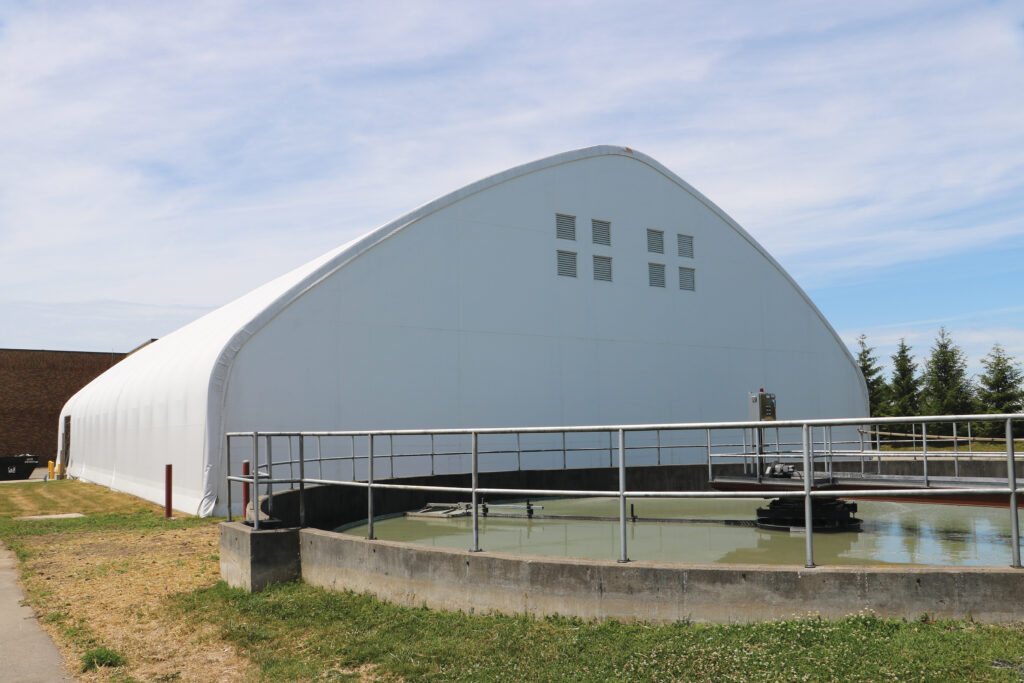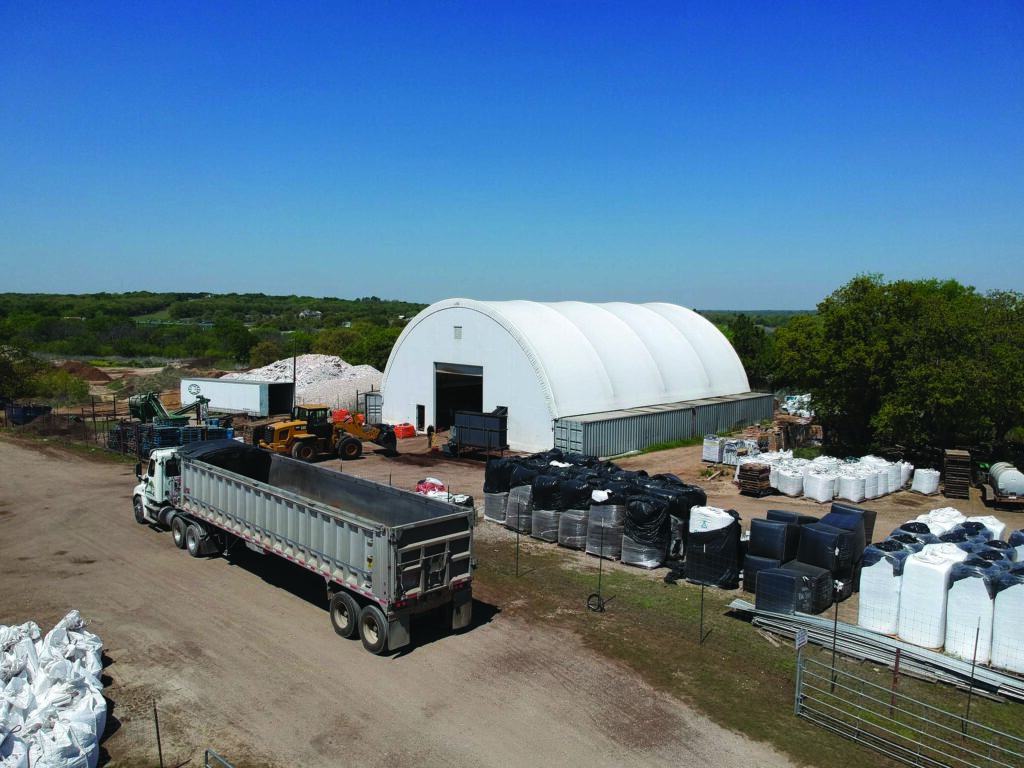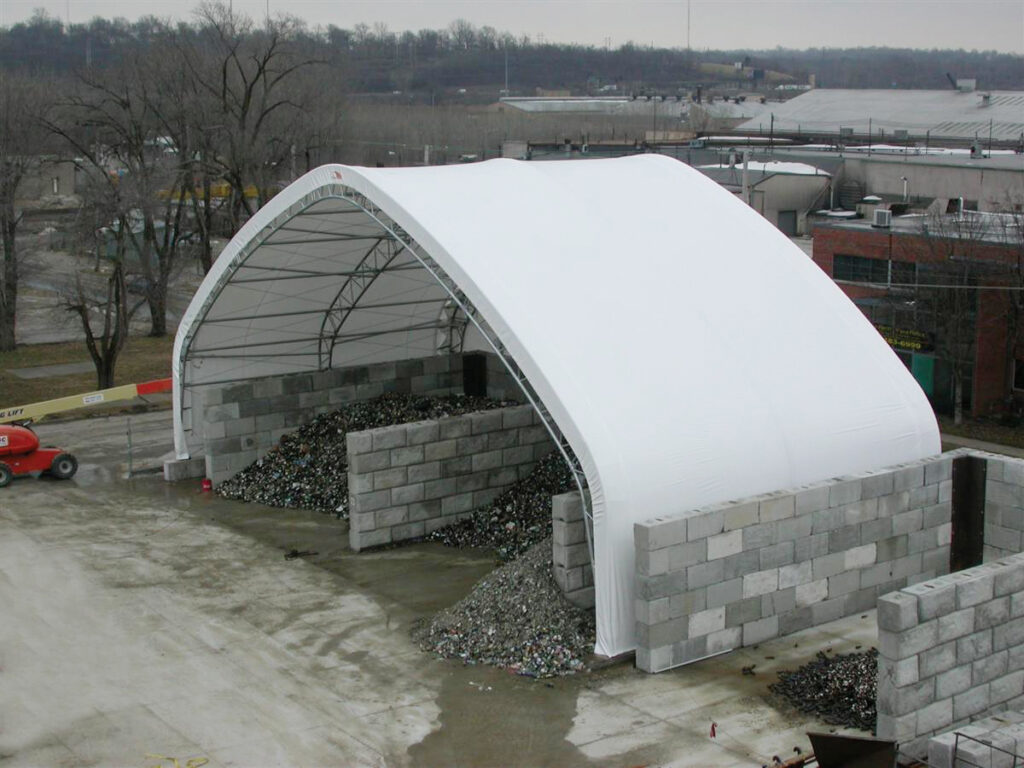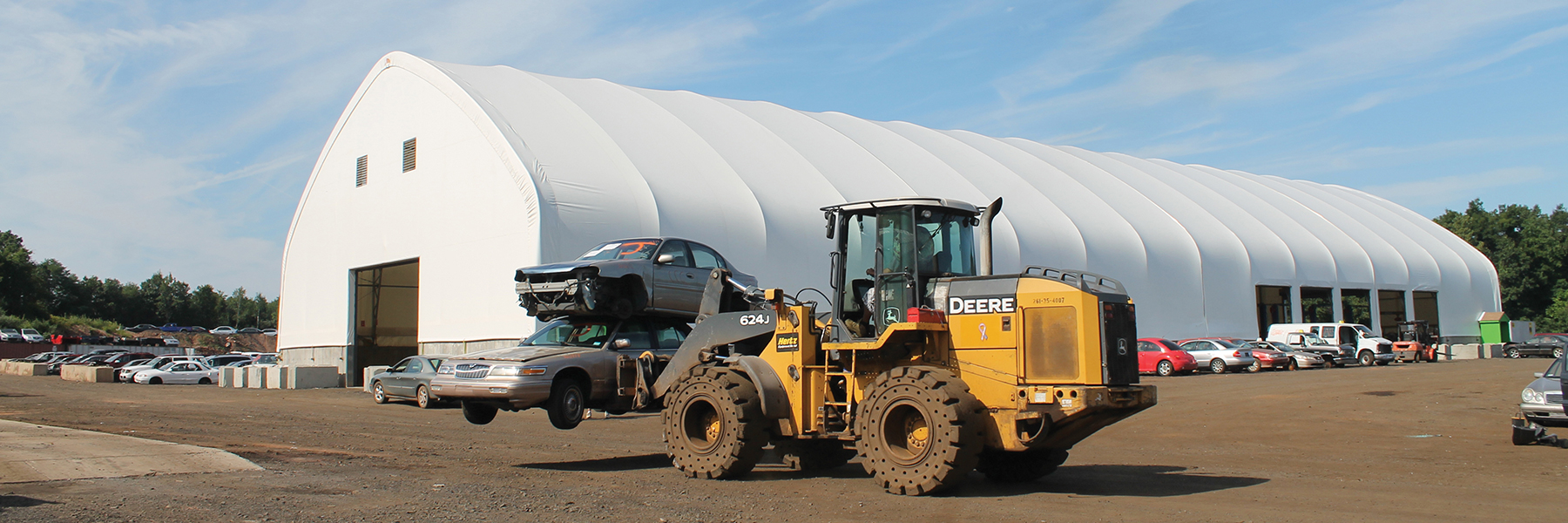Why Fabric Buildings Are Perfect For The Waste And Recycling Industry
August 31, 2021
The waste industry continues to be a mainstay in private businesses and municipal operations, and recycling has quickly become an essential part of public service across the country. As the demand for waste and recycling facilitation grows, businesses and municipalities are constantly searching for reliable structures to house their equipment, bulk materials and waste. With an increased need to expand upon and maintain these buildings, fabric structures have become a more appealing option throughout the industry.
Regardless of what is being stored, it is critical for operations to be aware of long-term maintenance costs and the value of those stored materials. Waste and recycling plants require sturdy structures with expansive space to supply their operations with adequate room and protection. The benefits provided by ClearSpan fabric structures make them a superior alternative to standard building solutions, and makes sorting waste, recycling, and compost easy and economical.
CLEAR SPAN DESIGN
Fabric structures offer a unique design that is unmatched by traditional waste and recycling buildings. Designed with a clear span interior, ClearSpan’s truss arch buildings allow fabric structures to be built at any length without requiring interior support posts. This creates substantial space inside the structure and allows it to be adapted to any operation’s distinctive requirements.
In the waste and recycling industry, available space is everything. It not only provides more room for storage and organization of materials, but the excess room also equates to added safety for workers and drivers to maneuver around the building. Likewise, high clearances make it easier for tall machinery to travel in and out of the structure, and the additional overhead height aids in improving quality airflow. Fresh air provides benefits to both workers and materials being stored within a waste or recycling plant.

DRY INTERIOR FOR STORAGE
Quality airflow and a climate-controlled interior are vital to maintaining an efficient and comfortable operation. The smallest amounts of moisture can wreak havoc on bulk storage materials or other valuable, sensitive items. Moisture accelerates the growth of mold and mildew, and in waste and recycling plants, this can be cause for concern for stored materials, as well as the health of workers.
Fabric structures offer valuable assistance for this, mitigating moisture and keeping fresh air moving through the building. ClearSpan’s climate sensitive cover helps to maintain a consistent temperature in the building’s interior environment. The cover prevents drastic changes caused by both heat and the cold, keeping the building cool on hot and humid days, as well as retaining heat when the outside temperature drops. Interiors are thus less susceptible to becoming humid, alleviating the risk of dampness and mold.
With the help of equipment, these buildings also supply optimal levels of active ventilation. Consistent airflow is critical in caustic environments such as those in the waste and recycling industry, and operations will find no better solution than a fabric building. ClearSpan fabric structures can be outfitted with systems and accessories necessary to produce the best environment possible, including high-quality exhaust fans, circulation fans and shutters.
For maintaining a dry interior, ClearSpan’s buildings are designed to keep the elements at bay. The triple-galvanized steel frames not only resist the corrosion of caustic environments, but also stand resolute under the stress of balanced and unbalanced snow loads. Durable covers remain locked in place, preventing moisture brought on by wind and rain from seeping into the interior. Fabric structures can endure even the harshest environments, withstanding winds up to 90 mph, a testament to the quality of materials used when designing and constructing these buildings.

MATERIALS FOR HIGH STRUCTURAL INTEGRITY
There are many myths surrounding fabric structures, several of which were covered in a previous ClearSpan blog. The most prominent misconception is that fabric structures aren’t durable, and for the waste and recycling industry, durability is an important factor in an operation’s choice of building.
ClearSpan’s fabric structures utilize the best materials available and can be engineered with the highest structural integrity. It all starts with the base, and ClearSpan’s numerous foundation options take into account different landscapes, as well as the unique requirements of individual operations. The most frequently used option, the innovative helical anchoring system, requires minimal excavation and allows the fabric structure to be easily relocated, but also gives it the strength and dependability of a permanent building solution.
ClearSpan uses the highest-quality steel to construct the frames of their fabric structures. The frames are triple galvanized to resist corrosion, and are backed by a 50-year warranty, so waste and recycling operations know they’re getting a building that will last decades, despite the harsh environment they might exist in.
When it comes to cladding, fabric covers have a significant impact on a building’s structural integrity. That’s why ClearSpan uses the best materials available to construct covers that provide unmatched benefits. Designed with a rip-stop weave, the standard 12.5 oz. polyethylene covers are thoroughly tested, boast a significant lifespan and are backed by a 20-year warranty to give confidence to the facilities who employ them. For businesses in need of extra strength, ClearSpan also offers an exclusive Armor Shield Cover. The Armor Shield is a 29 oz. architectural vinyl cover, designed to provide maximum strength and durability, and includes an industry-leading 30-year warranty.
Fabric buildings offer innovative solutions and are a popular alternative compared to standard building solutions.

A SUPERIOR SOLUTION TO STANDARD BUILDINGS
When searching for the ideal building, operations can expect a number of benefits from fabric structures that standard buildings can’t offer. Waste and recycling plants who choose ClearSpan can cut their long-term maintenance costs, keep their facilities streamlined and promote worker health and safety.
As a landfill facility located in Red Oak, Iowa, Iowa Waste Systems was on the hunt for a new building to use as a waste transfer station. In need of a more cost-effective solution than a standard building, the company sought out alternatives they could implement for a brand-new facility. Ultimately, they decided on a fabric building from ClearSpan, noting that the simple design of the building allowed for more efficient construction at a fraction of the normal cost. The building has made the company much less costly to operate and, as an enclosed facility, makes dealing with the elements more manageable.
Fabric structures save operations money by generally having a lower cost per square foot, providing more value for the services they offer. ClearSpan’s fabric covers are translucent, so they allow natural light to filter through to the interior, creating an environment that’s well-lit, but soft on the eyes, saving operations money on artificial lighting.
Quick construction timelines also eliminate many of the headaches involved in putting up a new building. Rather than spending months erecting a facility, ClearSpan’s frames are shipped to sites in pre-built parts, and upon arrival, the structure can be assembled with minimal time and cost. Along with the helical anchoring system, this allows the structure to be easily relocated or expanded upon, two features that businesses can’t find with standard building solutions.
While waste and recycling facilities are normally expensive and require excessive maintenance to run, fabric structures allow businesses to operate more efficiently and give customers a long-term solution that is cheaper and easier to operate.
To see how ClearSpan fabric buildings can benefit your operation, call or Request a Quote today.

